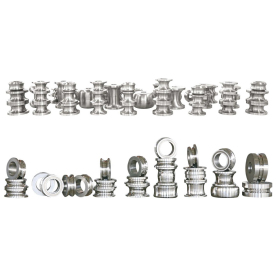[Solid state HF welder for metal processing]Exploring the Advantages and Applications of Solid State HF Welder for Metal Processing in Modern Manufacturing
News 2024-7-26
****The manufacturing industry has seen significant advancements in welding technologies over the years, with solid-state High Frequency (HF) welding emerging as a popular choice for specific metal processing applications. This innovative technique combines efficiency and precision, allowing manufacturers to create robust metal joints without the need for traditional welding methods. In this article, we will explore the principles of solid-state HF welding, its advantages, and its various applications in the metal processing sector.
What is Solid State HF Welding?
Solid-state HF welding is a specialized welding technique that utilizes high-frequency electromagnetic energy to heat and join metal pieces together. Unlike conventional welding methods that rely on molten metal, solid-state welding focuses on the molecular properties of metals at room temperature. This process typically uses an electric field to create resistance heating at the interface of the metal pieces, thereby allowing them to bond securely without reaching their melting point.
Key Advantages of Solid State HF Welding
1. **Reduced Heat Affected Zone (HAZ)**: One of the significant benefits of solid-state HF welding is the minimal heat affected zone. As the metal pieces do not reach their melting point, the structural integrity of the surrounding material is preserved. This is particularly important in applications where maintaining material properties is critical.
2. **Increased Welding Speed**: Solid-state HF welders offer rapid processing times, which significantly boosts overall manufacturing productivity. The ability to create strong joints in mere seconds can streamline production lines and reduce labor costs.

Exploring the Advantages and Applications of Solid State HF Welder for Metal Processing in Modern Manufacturing
4. **Stronger Weld Joints**: The welds created through solid-state HF welding are known for their superior strength and durability. The absence of molten metal minimizes the risk of defects, ensuring that the joints can withstand extreme conditions.
5. **Versatility**: Solid state HF welding can be applied to a wide range of materials, including steel, aluminum, and copper alloys. This versatility opens doors for manufacturers in various industries, enhancing their design capabilities and material selections.
Applications of Solid State HF Welding
The applications of solid state HF welding in metal processing are vast and varied. Some of the notable uses include:
1. **Automotive Industry**: In automotive manufacturing, solid-state HF welding is increasingly utilized for joining components such as exhaust systems, fuel tanks, and various structural parts. The ability to create strong, lightweight joints is essential for enhancing vehicle performance and safety.

Exploring the Advantages and Applications of Solid State HF Welder for Metal Processing in Modern Manufacturing

Exploring the Advantages and Applications of Solid State HF Welder for Metal Processing in Modern Manufacturing
4. **Medical Devices**: In the production of medical equipment, where cleanliness and precision are paramount, solid-state HF welding offers a method to create hermetic seals in devices such as surgical instruments and diagnostic tools.
5. **Consumer Electronics**: Many consumer electronics rely on solid-state HF welding for creating durable connections in metal housings and components, ensuring long-lasting performance and aesthetic appeal.
Conclusion
Solid state HF welding has revolutionized the landscape of metal processing by providing a reliable, efficient, and versatile method for joining metals. Its advantages—ranging from reduced heat affected zones and increased welding speeds to energy efficiency—make it a preferred choice across various industries. As technology continues to evolve, the implementation of solid-state HF welding is likely to expand further, resulting in enhanced production capabilities and better-quality products. For manufacturers seeking innovative solutions for their metal processing needs, solid-state HF welding presents a compelling option that aligns with the demands of modern manufacturing.
